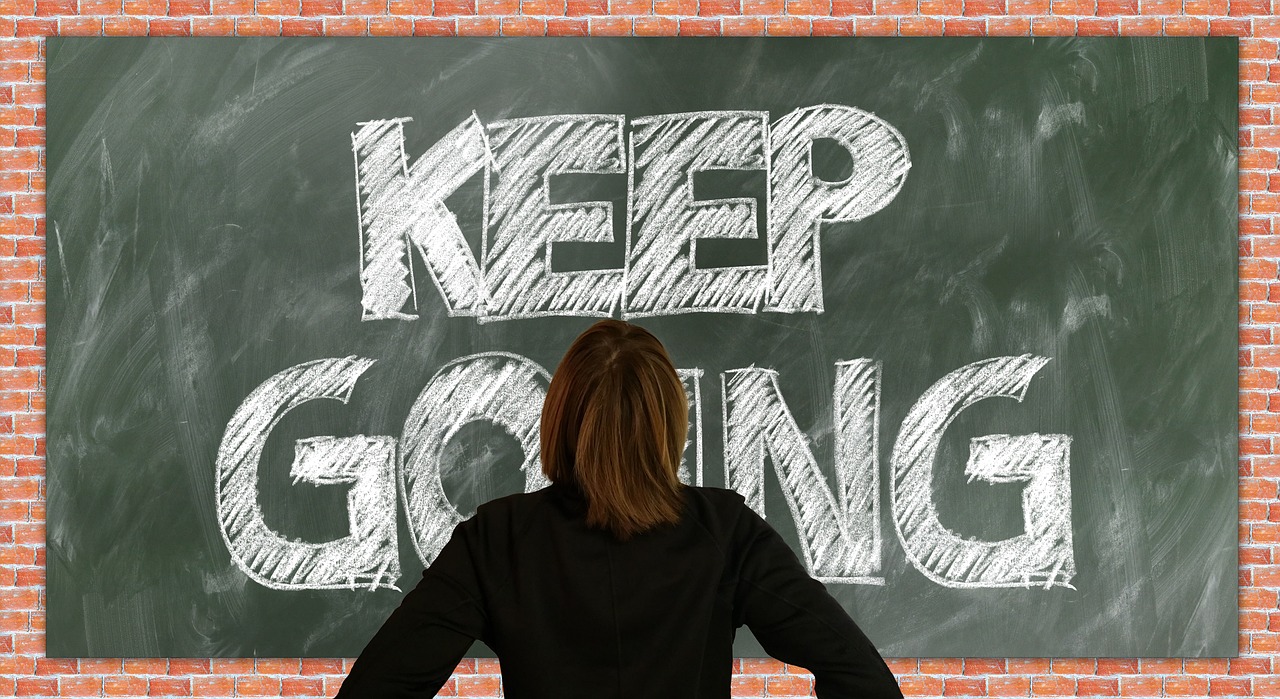The Behavioural Aspects of Consciousness
Have you ever stopped to think about how your consciousness shapes your everyday actions? It’s a fascinating journey into the mind, where awareness intertwines with behavior in ways that are both complex and intriguing. In this article, we’ll explore the intricate relationship between consciousness and behavior, examining how our awareness influences actions, decision-making, and social interactions in various contexts. From the choices we make at the grocery store to how we communicate with friends, consciousness plays a pivotal role in shaping our human experience.
Understanding the fundamental characteristics of consciousness is essential to grasping its impact on behavior. So, what exactly is consciousness? At its core, consciousness refers to our awareness of ourselves and our environment. It encompasses our thoughts, feelings, and perceptions, allowing us to navigate the world in a meaningful way. Various theories attempt to explain consciousness, from the biological perspective, which views it as a product of brain activity, to philosophical approaches that ponder its existence and nature. Regardless of the theory, one thing is clear: consciousness is a key player in how we behave and interact.
Have you ever wondered why you chose one option over another? This section investigates how conscious awareness shapes our choices, examining cognitive biases and the role of emotions in the decision-making process. Our decisions are not merely the result of rational thinking; they are often influenced by subconscious factors that can lead us astray. For instance, when faced with a dilemma, we may rely on our gut feelings rather than a thorough analysis of the situation. This can lead to decisions that are not always in our best interest, highlighting the intricate dance between consciousness and behavior.
Emotions play a crucial role in our decision-making. Have you ever made a purchase when you were feeling particularly happy, only to regret it later? This subsection explores how feelings can alter our perceptions and lead to different behavioral outcomes. Emotions can act as a double-edged sword; they can inspire us to take bold actions, yet they can also cloud our judgment. For example, when we experience fear, our fight-or-flight response kicks in, often leading to hasty decisions. Understanding this emotional influence is vital for making more conscious, informed choices.
Cognitive dissonance occurs when our beliefs conflict with our actions. Imagine believing that smoking is harmful, yet continuing to smoke. This internal conflict creates discomfort, pushing us to either change our beliefs or justify our actions. This section discusses how this psychological phenomenon influences our behavior and decision-making processes. The struggle between what we think and what we do can lead to significant changes in our behavior, often pushing us toward a more harmonious state of being.
Heuristics are mental shortcuts used in decision-making. Picture this: you’re trying to decide what to eat, and instead of weighing every option, you automatically choose what you had last time. This subsection examines how these cognitive strategies can both aid and hinder our conscious choices. While heuristics can save time and effort, they can also lead to biases that skew our judgment. Recognizing when we’re relying on these shortcuts is crucial for enhancing our decision-making capabilities.
Consciousness significantly affects our social behavior. Have you noticed how your awareness of self and others shapes communication and relationships? This section looks at how our understanding of ourselves and our social environment influences how we interact with others. Being conscious of social cues, body language, and emotional states can enhance our ability to connect with others, fostering deeper relationships. On the flip side, a lack of awareness can lead to misunderstandings and conflicts, highlighting the importance of consciousness in our social lives.
Let’s shift gears and explore the role of consciousness in learning processes. How does our awareness impact information retention and skill acquisition? This section emphasizes that consciousness is not just about being awake; it’s about being actively engaged in the learning process. When we are aware of our learning strategies and the material we are studying, we are more likely to retain information and apply it effectively. It’s like having a roadmap for your journey; the clearer the path, the easier it is to reach your destination.
Attention is a vital component of learning. Think about the last time you tried to study while distracted by your phone. This subsection discusses how conscious focus enhances our ability to absorb and process new information. When we direct our attention to a specific task, we create a mental environment conducive to learning. Techniques like mindfulness can help improve our concentration, allowing us to engage more deeply with the material at hand.
Metacognition refers to our awareness of our own thought processes. Imagine being able to step back and evaluate how you learn best. This section examines its importance in self-regulation and effective learning strategies. By developing metacognitive skills, we can become more efficient learners, adjusting our approaches based on what works for us. It’s like having a personal coach in your mind, guiding you toward better understanding and mastery.
- What is consciousness? - Consciousness refers to our awareness of ourselves and our environment, encompassing thoughts, feelings, and perceptions.
- How does consciousness affect decision-making? - Consciousness influences decisions by shaping our perceptions and emotional responses, often leading to cognitive biases.
- What is cognitive dissonance? - Cognitive dissonance is the psychological discomfort experienced when our beliefs conflict with our actions.
- What role does attention play in learning? - Attention enhances our ability to absorb and process new information, making focused learning more effective.

The Nature of Consciousness
This article explores the intricate relationship between consciousness and behavior, examining how our awareness influences actions, decision-making, and social interactions in various contexts.
Understanding the fundamental characteristics of consciousness is essential to grasping its impact on behavior. Consciousness can be defined as the state of being aware of and able to think about one's own existence, thoughts, and surroundings. It's like a spotlight that illuminates certain aspects of our mind, allowing us to focus on what’s important while dimming everything else. This complex phenomenon has been the subject of extensive research and debate among psychologists, philosophers, and neuroscientists.
Various theories have emerged to explain consciousness, each offering a unique perspective. For instance, the Global Workspace Theory suggests that consciousness arises from the integration of information from different brain regions, creating a unified experience. On the other hand, the Higher-Order Thought Theory posits that consciousness is dependent on our ability to have thoughts about our thoughts. This means that simply being aware of something isn't enough; we need to reflect on that awareness to truly understand it.
Moreover, the nature of consciousness can be further explored through its different states. These states range from full alertness to deep sleep, and each has distinct characteristics:
| State of Consciousness | Description |
|---|---|
| Waking Consciousness | A state of full awareness where one can think, reason, and respond to stimuli. |
| Altered States | Includes states induced by meditation, drugs, or sleep, where awareness and perception are significantly changed. |
| Subconscious Awareness | Refers to thoughts and feelings that exist below the level of conscious awareness but still influence behavior. |
These varying states of consciousness not only affect how we perceive the world but also how we interact with it. For example, when we are in a state of heightened awareness, we are more likely to notice subtle cues in social situations, which can lead to more effective communication. Conversely, during altered states, we might misinterpret social signals, leading to misunderstandings.
In addition to these theoretical frameworks, consciousness is also deeply intertwined with our emotions. Our emotional state can significantly shape our conscious experience and, consequently, our behavior. For instance, when we feel happy, our consciousness tends to focus on positive aspects of our environment, leading to more optimistic behaviors. In contrast, negative emotions can cloud our judgment and lead to more defensive or aggressive actions.
Ultimately, the nature of consciousness is a fascinating and complex topic that continues to evolve as new research emerges. By understanding the various aspects of consciousness, we can better comprehend how it influences our behavior and decision-making processes.
- What is consciousness? - Consciousness is the state of being aware of and able to think about one's own existence and surroundings.
- How does consciousness affect behavior? - Consciousness influences how we perceive situations, make decisions, and interact with others.
- What are the different states of consciousness? - The main states include waking consciousness, altered states, and subconscious awareness.

When we talk about consciousness and its role in decision-making, we're diving into a fascinating realm where awareness meets choice. Imagine standing at a crossroads, each path representing a different decision. Your consciousness acts like a flashlight, illuminating the options ahead, allowing you to weigh the pros and cons. But here's the kicker: our conscious mind isn't the only player in this game. Emotions and cognitive biases often creep in, influencing our decisions in ways we might not even realize.
Have you ever made a choice that you later regretted? Perhaps you bought that flashy new gadget on a whim, only to find it gathering dust weeks later. This is where the interplay between emotions and consciousness becomes evident. Our feelings can significantly sway our perceptions, leading us to make choices that don't always align with our rational thoughts. For instance, if you're feeling particularly happy, you might be more inclined to take risks, such as investing in a stock or making a spontaneous purchase. On the flip side, when you're feeling anxious or sad, you might stick to safer options, avoiding risks altogether.
Moreover, let’s not forget about cognitive dissonance. This psychological phenomenon occurs when our beliefs clash with our actions. For example, if you value health but find yourself indulging in junk food, the discomfort from this inconsistency can lead to a change in behavior. You might either justify your choice by downplaying the health risks or decide to change your eating habits altogether. This internal struggle showcases how consciousness can drive us to reassess our decisions, ultimately influencing our behaviors.
Another interesting aspect of decision-making is the use of heuristics. These mental shortcuts help us navigate complex decisions quickly, but they can also lead us astray. Think of heuristics as the quick-and-dirty rules of thumb that our brain uses to simplify choices. While they can be incredibly efficient, they can also result in biases. For example, if you have a friend who always seems to make poor financial decisions, you might unconsciously avoid similar investments, relying on your past experiences rather than evaluating the current situation objectively.
In essence, our conscious awareness is just the tip of the iceberg when it comes to decision-making. Beneath the surface lies a complex interplay of emotions, cognitive dissonance, and heuristics. Understanding these factors can empower us to make better choices and enhance our overall decision-making processes.

Emotional Influence on Choices
Have you ever noticed how your mood can completely change your decisions? It's fascinating how emotions play a pivotal role in the choices we make every day. Whether it’s a small decision like what to eat for breakfast or a significant one like accepting a job offer, our feelings can sway us in unexpected directions. Imagine standing in front of a delicious dessert display; if you’re feeling happy, you might indulge without a second thought. But if you’re stressed, you might skip dessert altogether, thinking about your waistline instead. This illustrates the profound impact of emotional states on our decision-making processes.
Research shows that emotions can color our perceptions and influence our judgments. For instance, when we feel anxious, we may perceive risks more acutely, leading us to avoid certain choices altogether. Conversely, when we’re feeling confident or excited, we might take risks we wouldn’t normally consider. This fluctuation can lead to what psychologists call “emotional reasoning,” where we let our feelings dictate our logic. Think of it like wearing tinted glasses; the world looks different depending on the color of the lenses.
Moreover, the connection between emotions and choices isn't just a personal experience; it has broader implications in various contexts, such as marketing, politics, and interpersonal relationships. For example, advertisers often leverage emotional appeals to influence consumer behavior. They know that if they can evoke feelings of happiness, nostalgia, or even fear, they can steer potential buyers toward their products. In politics, candidates often use emotional narratives to connect with voters, making their messages resonate on a personal level.
To better understand this influence, let’s break down some key emotional drivers that can affect our choices:
- Fear: Often leads to avoidance behavior; people may choose not to engage in activities perceived as risky.
- Happiness: Can enhance creativity and risk-taking, leading to more adventurous decisions.
- Sadness: May cause individuals to make more conservative choices, seeking comfort and security.
In summary, our emotions are powerful forces that shape our decisions in ways we often don’t realize. By becoming more aware of these influences, we can learn to navigate our choices more effectively, recognizing when our feelings might be steering us off course. Next time you find yourself at a crossroads, take a moment to check in with your emotions. Are they helping you make a wise choice, or are they leading you down a path you might regret later?
- How do emotions affect decision-making? Emotions can significantly alter our perceptions and judgments, often leading us to make choices based on feelings rather than logic.
- Can we control our emotional influence on decisions? While we can't eliminate emotions, we can practice mindfulness and awareness to help mitigate their impact on our decision-making processes.
- Are there strategies to improve decision-making? Yes, techniques such as cognitive reframing, seeking external opinions, and taking breaks can help us make more balanced decisions.

Cognitive Dissonance
Cognitive dissonance is a fascinating psychological phenomenon that occurs when our beliefs, attitudes, or values clash with our actions. Imagine you're a committed environmentalist, yet you find yourself driving a gas-guzzling SUV. This internal conflict can create a sense of discomfort, leading to a desire to resolve the inconsistency. The tension that arises from this dissonance can prompt individuals to either change their beliefs or alter their behaviors to restore harmony. It's like a mental tug-of-war, where one side represents your beliefs and the other your actions, and the struggle can be quite intense.
The concept was first introduced by psychologist Leon Festinger in the 1950s, and since then, it has become a cornerstone in understanding human behavior. Cognitive dissonance not only influences personal decisions but also shapes social interactions and group dynamics. For example, a smoker who knows that smoking is harmful may experience cognitive dissonance when they light up a cigarette. To alleviate this discomfort, they might downplay the risks associated with smoking or justify their habit by highlighting the stress-relief benefits. This rationalization is a common strategy people use to cope with the dissonance between their actions and beliefs.
Moreover, cognitive dissonance can lead to significant changes in behavior over time. When faced with dissonance, individuals often seek to align their actions with their beliefs. This alignment can manifest in various ways, such as adopting healthier lifestyles, changing consumption habits, or even altering political views. The process can be likened to adjusting the sails of a ship to navigate through turbulent waters; individuals must find a way to steer their beliefs and actions in the same direction to maintain psychological equilibrium.
Understanding cognitive dissonance is crucial for anyone looking to improve their decision-making processes. By recognizing when dissonance occurs, individuals can take proactive steps to address the underlying issues. For instance, if you find yourself justifying a poor decision, take a moment to reflect. Ask yourself if your justification truly aligns with your core values. This self-awareness can lead to more conscious choices and ultimately foster personal growth.
In conclusion, cognitive dissonance is not just a psychological curiosity; it's a powerful force that shapes our behaviors and decisions. By understanding this concept, we can better navigate our internal conflicts and strive for a more harmonious existence. Remember, the next time you feel that uncomfortable tug within yourself, it might just be your beliefs and actions trying to find common ground.

Heuristics in Decision-Making
When we think about decision-making, it often feels like we’re faced with a mountain of options, each one requiring careful consideration. But here’s the kicker: our brains don’t always have the time or energy to delve into every single detail. This is where heuristics come into play. Heuristics are essentially mental shortcuts that help us navigate the complex landscape of choices efficiently. Think of them as the GPS for our decision-making process, guiding us through the twists and turns without getting lost in the weeds.
These cognitive strategies can be incredibly useful, especially when we're under pressure or faced with overwhelming information. For instance, when shopping for a new phone, you might rely on the brand name as a heuristic. If you know that Brand X is generally reliable, you may choose it over lesser-known brands without conducting extensive research. However, while heuristics can save time and effort, they can also lead us astray. Just like a GPS might sometimes take you down a less-than-ideal route, heuristics can result in poor decisions if we rely on them too heavily.
To illustrate how heuristics work, let’s explore a few common types:
- Availability Heuristic: This occurs when we judge the likelihood of an event based on how easily examples come to mind. For instance, if you recently heard about a plane crash, you might overestimate the dangers of flying.
- Representativeness Heuristic: This involves making decisions based on how much something fits our existing stereotypes. For example, if someone meets our preconceived notion of a scientist, we might assume they are highly intelligent without knowing their actual qualifications.
- Anchoring Heuristic: This is when we rely too heavily on the first piece of information we receive. If you see a shirt priced at $100 and then find it on sale for $70, you might think you’re getting a great deal, even if the shirt is only worth $50.
While heuristics can be beneficial, they also come with risks. They can lead us to make snap judgments that don’t hold up under scrutiny, causing us to overlook critical information or alternatives. This is especially true in high-stakes situations where the consequences of a poor decision can be significant. Understanding the role of heuristics in our decision-making can empower us to recognize when we’re relying on these shortcuts and to question whether they are leading us in the right direction.
In conclusion, heuristics are fascinating cognitive tools that can simplify our decision-making process, but they come with their own set of challenges. By being aware of these mental shortcuts, we can strive for a balance between efficiency and thoroughness in our choices. After all, just like a well-planned road trip, the journey of decision-making is about finding the best path while being mindful of potential detours.
- What are heuristics? Heuristics are mental shortcuts that simplify decision-making by allowing us to make judgments quickly and efficiently.
- Can heuristics lead to poor decisions? Yes, while heuristics can save time, they can also result in biased or inaccurate judgments if relied upon too heavily.
- How can I improve my decision-making? Being aware of your reliance on heuristics and taking the time to gather more information can lead to better decision outcomes.

Social Interactions and Consciousness
When we think about social interactions, it’s hard to ignore the profound impact that consciousness has on how we relate to one another. Our awareness of ourselves and our surroundings shapes not only our reactions but also our understanding of others. Imagine walking into a crowded room; your consciousness is immediately engaged as you assess the atmosphere, the people present, and even your own feelings about being there. This awareness drives your behavior, influencing whether you approach someone, hang back, or even leave the space entirely.
Consciousness allows us to navigate the complexities of social engagement. It helps us interpret non-verbal cues, such as body language and facial expressions, which are crucial in communication. For instance, if someone is crossing their arms while speaking to you, your conscious mind might interpret this as defensiveness, prompting you to adjust your approach. This ability to read the room is not just instinctive; it’s a conscious process that involves cognitive effort and emotional intelligence.
Moreover, our consciousness plays a pivotal role in the way we form and maintain relationships. When we are aware of our own emotions and thoughts, we become better equipped to empathize with others. This empathy fosters stronger connections and improves our social skills. Think of it as a dance; when both partners are aware of each other's movements, the dance flows beautifully. However, when one partner is out of sync, the entire performance can falter.
In social contexts, our consciousness also influences our self-presentation. We often adjust our behavior based on how we want others to perceive us, a phenomenon known as self-monitoring. This can lead to a variety of behaviors, from being overly accommodating to displaying confidence. The table below summarizes how consciousness affects different aspects of social interactions:
| Aspect of Social Interaction | Influence of Consciousness |
|---|---|
| Non-verbal Communication | Aids in interpreting body language and facial expressions |
| Empathy | Enhances understanding of others' feelings and perspectives |
| Self-Presentation | Guides behavior based on desired perceptions |
| Conflict Resolution | Facilitates awareness of differing viewpoints and emotional responses |
Furthermore, the interplay between consciousness and social interactions can lead to fascinating dynamics. For example, when we engage in deep conversations, our consciousness allows us to reflect on our values, beliefs, and the impact of our words. This reflection can alter our behavior and strengthen our connections with others. On the flip side, a lack of consciousness can lead to misunderstandings and conflicts, as we might react impulsively without considering the feelings of those around us.
In conclusion, the relationship between consciousness and social interactions is intricate and multifaceted. Our awareness not only shapes our behavior but also enhances our ability to connect with others on a deeper level. By fostering a greater understanding of our own consciousness, we can improve our social skills and build more meaningful relationships. After all, in the grand tapestry of human interaction, consciousness is the thread that weaves us together.
- How does consciousness affect communication? Consciousness helps us interpret non-verbal cues and adjust our communication style based on our awareness of social dynamics.
- Can consciousness improve my relationships? Yes, being more aware of your emotions and thoughts can enhance empathy and strengthen connections with others.
- What role does self-awareness play in social interactions? Self-awareness allows individuals to present themselves authentically and navigate social situations more effectively.

Consciousness in Learning
When we think about learning, we often envision classrooms filled with eager students, textbooks piled high, and the sound of pens scratching on paper. However, the real magic of learning happens in the mind, particularly through the lens of consciousness. Consciousness plays a pivotal role in how we acquire, process, and retain information. It’s like the spotlight on a stage, illuminating what we choose to focus on while casting the rest into shadow. Without this conscious awareness, much of what we learn can slip through the cracks, unnoticed and unremembered.
One of the most fascinating aspects of consciousness in learning is its relationship with attention and focus. When we consciously direct our attention to a task, we enhance our ability to absorb and process new information. Imagine trying to learn a new language while simultaneously watching a movie – it’s nearly impossible to fully grasp the nuances of either. By concentrating our awareness on one task, we create a stronger connection to the material, leading to better retention and understanding. This is why students are often encouraged to eliminate distractions and create a focused learning environment.
Additionally, the concept of metacognition plays a crucial role in how we learn. Metacognition refers to our awareness and understanding of our own thought processes. It’s like being the director of your own learning journey, where you can assess what you know, what you don’t know, and how best to approach acquiring new knowledge. This self-regulation allows learners to adapt their strategies based on their understanding, making the learning experience more effective. For instance, if a student realizes they’re struggling with a particular concept, they can switch tactics, perhaps by seeking help or utilizing different study methods.
To illustrate the importance of consciousness in learning, let’s consider a simple table that outlines the key elements:
| Element | Description |
|---|---|
| Attention | The ability to focus on specific stimuli while ignoring distractions. |
| Metacognition | Awareness of one’s own learning processes and strategies. |
| Retention | The capacity to keep information in memory over time. |
| Application | The ability to use learned information in practical situations. |
In conclusion, consciousness is not just a passive state of being; it actively shapes our learning experiences. By harnessing the power of attention and metacognition, we can transform how we approach learning. It’s like having a secret weapon that allows us to navigate the vast seas of information more effectively. So, the next time you sit down to learn something new, remember that your consciousness is your greatest ally in the quest for knowledge.
- What is consciousness in the context of learning? Consciousness in learning refers to our awareness and focus on the information we are trying to acquire, which significantly influences how well we learn.
- How does attention affect learning? Attention enhances our ability to absorb information by allowing us to concentrate on specific tasks, leading to better retention.
- What is metacognition? Metacognition is the awareness of one’s own thought processes, allowing learners to evaluate and regulate their learning strategies effectively.
- Can distractions impact learning? Yes, distractions can hinder our ability to focus and process information, making it harder to learn effectively.

Attention and Focus
Attention and focus are like the spotlight on a stage, illuminating what truly matters while casting the rest into the shadows. When we talk about learning, these two elements are absolutely crucial. Have you ever tried to study while your phone buzzes with notifications? It's like trying to read a book in a crowded café—nearly impossible! Our ability to concentrate determines how well we absorb new information and ultimately how we apply it in real-life situations.
Conscious focus allows us to filter out distractions and hone in on the task at hand. Imagine you're at a concert; the music is loud, the crowd is buzzing, but you’re only focused on the band. This selective attention is what helps us learn effectively. Studies have shown that when we engage in deep focus, we not only retain information better but also enhance our understanding of complex concepts.
Moreover, attention is not just about what we choose to focus on; it’s also about how long we can maintain that focus. Attention spans have been decreasing in the digital age, with constant notifications and information overload competing for our mental real estate. This is where strategies come into play. Techniques such as the Pomodoro Technique—working for 25 minutes and then taking a 5-minute break—can help improve focus and prevent burnout. It’s like giving your brain a mini-vacation before diving back into the task.
Another fascinating aspect of attention is its relationship with our emotions. When we are emotionally invested in a subject, our focus sharpens. Think about a time when you were passionate about a project or a hobby; didn’t you find it easier to concentrate? This emotional engagement can create a powerful feedback loop: the more focused we are, the more we learn, and the more we learn, the more engaged we become.
To illustrate the significance of attention and focus in learning, consider the following table:
| Aspect | Impact on Learning |
|---|---|
| Concentration | Increases information retention and understanding. |
| Distraction | Leads to fragmented learning and poor retention. |
| Emotional Engagement | Enhances focus and motivation, facilitating deeper learning. |
| Attention Span | Affects the duration and quality of learning sessions. |
In conclusion, mastering attention and focus is essential for effective learning. By creating environments that minimize distractions and leveraging emotional connections to our subjects, we can enhance our ability to learn and grow. So, next time you sit down to study, consider what you can do to sharpen your focus. After all, in the grand theater of learning, attention is the spotlight that reveals the path to knowledge!
- What is the Pomodoro Technique? The Pomodoro Technique is a time management method that involves working for 25 minutes and then taking a 5-minute break to enhance focus and productivity.
- How can I improve my attention span? To improve attention span, try reducing distractions, practicing mindfulness, and engaging in focused activities that interest you.
- Why is emotional engagement important in learning? Emotional engagement increases motivation and focus, making it easier to absorb and retain information.

Metacognition
Metacognition is a fascinating concept that essentially means "thinking about thinking." It involves being aware of your own thought processes and understanding how you learn, which can significantly enhance your ability to acquire new skills and knowledge. Imagine you're trying to solve a complex puzzle. If you're not aware of your strategies or the mistakes you're making, you might end up going in circles. But once you step back and assess your approach, you can adjust your tactics and ultimately succeed. This self-awareness is the crux of metacognition, and it plays a pivotal role in effective learning.
One of the key aspects of metacognition is self-regulation. This refers to your ability to manage your learning processes, including planning, monitoring, and evaluating your understanding and performance. For instance, when studying for an exam, a metacognitive learner might ask themselves questions like, "Do I really understand this topic?" or "What strategies can I use to remember this information better?" By actively engaging in this kind of reflective thinking, learners can identify gaps in their knowledge and take steps to fill those gaps, making their study sessions much more productive.
Research has shown that metacognitive strategies can lead to improved academic performance. Students who are aware of their learning processes tend to use more effective study techniques, which can result in better retention of information. To illustrate this, let’s consider a simple table that outlines some common metacognitive strategies and their benefits:
| Metacognitive Strategy | Benefits |
|---|---|
| Self-Assessment | Helps identify strengths and weaknesses in understanding. |
| Goal Setting | Provides clear objectives for learning, enhancing motivation. |
| Reflection | Encourages deeper understanding and retention of material. |
| Adjusting Strategies | Allows for flexibility in learning approaches based on effectiveness. |
In addition to academic contexts, metacognition is also crucial in everyday decision-making. For example, when faced with a tough choice, a metacognitive thinker might pause to reflect on their past decisions and the outcomes that followed. This reflection can help them make more informed and rational choices in the future. It's like having a mental playbook that you can refer to whenever you're at a crossroads, allowing you to learn from your experiences and avoid repeating past mistakes.
In summary, metacognition is not just a buzzword; it's a powerful tool that can transform the way we learn and make decisions. By fostering a greater awareness of our cognitive processes, we can enhance our self-regulation, improve our learning strategies, and ultimately achieve our goals more effectively. So, the next time you're tackling a challenging task, take a moment to think about how you're thinking. It might just make all the difference!
Frequently Asked Questions
- What is metacognition? Metacognition refers to the awareness and understanding of one's own thought processes.
- How can metacognition improve learning? By being aware of their learning strategies, individuals can adapt and choose more effective methods for studying and retaining information.
- Can metacognition be developed? Yes, metacognitive skills can be cultivated through practice and self-reflection.
- What are some examples of metacognitive strategies? Examples include self-assessment, goal setting, and reflection on learning experiences.
Frequently Asked Questions
- What is consciousness?
Consciousness is our awareness of ourselves and our environment. It encompasses our thoughts, feelings, and perceptions, allowing us to experience the world around us. Think of it as the spotlight that illuminates our mental stage, helping us navigate through life.
- How does consciousness influence decision-making?
Consciousness plays a crucial role in shaping our decisions. When we are aware of our thoughts and emotions, we can make more informed choices. However, factors like cognitive biases and emotional influences can sometimes cloud our judgment, leading us to decisions that may not align with our best interests.
- What are cognitive biases?
Cognitive biases are systematic patterns of deviation from norm or rationality in judgment. They can affect our decisions and perceptions, often leading us to make choices based on emotions rather than logic. It's like wearing tinted glasses that alter how we see the world.
- Can emotions impact our decision-making?
Absolutely! Emotions can significantly sway our choices. For instance, when we're happy, we might take more risks, while fear can lead us to avoid certain actions. It's as if our feelings are the puppeteers, pulling the strings of our decisions.
- What is cognitive dissonance?
Cognitive dissonance occurs when our beliefs clash with our actions, creating a mental discomfort. This discomfort often drives us to change either our beliefs or behaviors to restore harmony. Think of it as a tug-of-war between what we believe and what we do.
- What are heuristics?
Heuristics are mental shortcuts that help us make decisions quickly. While they can simplify complex choices, they can also lead to errors in judgment. It's like using a map app that sometimes takes you on a shortcut, which might not always be the best route.
- How does consciousness affect social interactions?
Our awareness of ourselves and others greatly influences how we communicate and build relationships. Being conscious of social cues and emotional states can enhance our interactions, making them more meaningful and effective.
- What role does consciousness play in learning?
Consciousness is vital in learning processes. It helps us focus our attention and retain information. When we are fully aware and engaged, we are more likely to absorb new knowledge and skills, making learning a more enriching experience.
- What is metacognition?
Metacognition is the awareness of one's own thought processes. It involves thinking about how we think, which can improve our learning strategies and self-regulation. It's like having a personal coach in your mind, guiding you on how to learn better.



















